|
They say one of the keys to becoming a better writer is reading. So, what do members of the Writing Arts community recommend? From biting nonfiction, to heart-stopping thrillers, to heartfelt Young Adult, the answers are diverse and well-rounded. If you’re looking to add something fresh to your To-Read list, here are seven tried-and-true recommendations to consider!
2. Welcome to Night Vale – Joseph Fink & Jeffrey Cranor
4. Every Bright and Broken Thing – Brian McBride
6. So You’ve Been Publicly Shamed – Jon Ronson
Hopefully, your interest has been piqued by at least one of these solid recommendations from fellow Writing Arts majors. As you start to make a list of Summer reads, keep these in mind!
0 Comments
Photo: Darwin Vegher on Unsplash
We all have that one novel we think has prose worth worshiping or a poem with stanzas unmatched by any other. This could be the poignant words of Virginia Woolf, the straight-forward punch of Ernest Hemingway, or the masterful world-building of Renée Ahdieh. Regardless of whichever work of literature you hold as a marker of the highest standard, it has had a lasting impact on your worldview, and just as powerful of an effect on how you view writing. We read it, we absorbed it, and now every time our fingers tap the keyboard we strive to emulate it. Conscious or not, I feel confident in saying that every writer has done this at some point in their career. We have all tried to create something as impactful that contains perfect artistry like the work we admire, but in the end, we are left with a watered-down, soggy piece that would fall apart if compared to the original. And can you blame writers for trying? After all, one of the constantly-repeated mantras of writing is, “Good writers borrow from other writers. Great writers steal from them outright.” This was originally said by acclaimed screenplay writer, Aaron Sorkin. Well, actually, he stole the quote. T.S. Elliot once said, many years before, “Mediocre writers borrow; great writers steal.” But, even before T.S. Elliot stumbled upon that revelation, François Voltaire had remarked, “Originality is nothing but judicious imitation. The most original writers borrowed one from another.” Looking at the difference between these quotes is a perfect way to understand voice and inspiration. While you should not steal as plainly as Sorkin did from Elliot, you can still hear the screenwriter's voice and style in word choice and tone. Another writers’ voice is not something you can steal with authenticity. There is a balance between inspiration and personal discovery that you can use to help you find your unique voice and stop sounding like a bad parody of the New York Times Bestseller list. Remember, there are many organic ways to find a style that fits your writing. This is just one helpful method that you can use to uncover your voice. Step 1: Collect a Sample The first step in this process can be the trickiest for a lot of writers because it requires you to stop thinking. Well, it is probably helpful to keep a few thoughts in your head for this exercise, but you have to quiet all the nagging voices in your head about how ‘good’ writing is supposed to sound or which words are academic or anything about writing. Once your head is fully clear, you just write for ten minutes. You can set a timer, or just let yourself ramble on and on for as long as you like. Whatever you choose to write about is up to you, though I do recommend to work outside of your current project. You want this to be as free and as messy as possible, so don’t let the pressure of a work in progress get in the way of that. Once you’ve completed your free-write, read it over. As you do, have a pen handy so that you can underline anything that sticks out as something intriguing. It can be the choice of a certain verb, a particularly vivid description, or the way you employed dialogue. Whatever you find, take note of it. Make a list of all the aspects within your natural writing style that you would like to keep, or implement more into your writing. And just like that, you’ve already got a voice in the works! Step 2: Time to Steal Now, it is finally time to indulge yourself and delve into the works of all your favorite writers. Try to recall what parts of their writing you gravitated toward. Did their use of dialogue bring you to tears (in a good way)? Did they craft images you’ll never forget? After you have a list of techniques and language you adore, mix and match your options. Now is the time to be creative and mix literary devices you would’ve never considered to work together. Take syntax from one, structure from another, descriptions from the classics, personification from the romantics. Use whatever combination you chose to fill in any of the gaps you identified in your natural style. Be careful, though, you want to do this sparingly. If not, your work will read less as a unique voice influenced by other famous works and more like a style-Frankenstein. Do not just pick an aspect that you think is academic and writerly, consider what tools are best for crafting your story. Step 3: Blend! Now that you have identified aspects of your own writing that you adore and of inspiring writers’ work that you admire, it’s time to blend the two through writing. I would recommend doing another burst of free-writing, this time being conscious in your word choice and how different elements of style impact the tone of your writing. Still, don’t put too much thought into it. Your voice should still sound natural and like a reflection of you. The ‘stolen’ literary devices you included should only elevate your work to a level you prefer. And it may not work out the first time. Maybe you’re struggling with one of the devices you chose, or one of them doesn’t suit the project. That’s alright, you can drop that aspect or maybe even pick a new one. Or, you may even discover that some of the things you loved about other works have been present in your own voice all along. With each trial and error or trial and success, you gain more control and understanding of your voice as a writer. Finding your voice takes time, patience, and understanding. A single run-through of this exercise may only be the start of your journey. But don’t get discouraged or intimidated. Remember that regardless of whether you like your current writing style or not, you already have one! It is never going to go away; it can only grow stronger. Photo via: Manpower
Does the phrase “So, tell me a little bit about yourself”make you forget everything you’ve ever known, including your own name, like it does for me? Then this is the perfect read for you! A vital skill that doesn’t always get comprehensively taught in college, is how to sell yourself. As many of us are soon to be young professionals, this aspect of the job market can be one of the scariest, and most difficult to navigate. Regardless of where you believe your career path will take you, being able to leave a lasting impression is a tool that could benefit everyone. Whether you're presenting an idea, networking, or interviewing for a job, a well thought out elevator pitch could save you from being tongue-tied in a professional environment. What Is An Elevator Pitch? An elevator pitch is a brief persuasive speech that informs the listener who you are, what you do, and what you are looking to accomplish, either by speaking to them, or in general. Elevator pitches should be no longer than 90 seconds in length, which equates to no longer than a paragraph when written down. The name elevator pitch was coined because the idea behind your speech is that it should be as long as a ride in an elevator from the bottom floor to the top floor. Think executive summary, not full memoir of your entire work career, and personal life. Your elevator pitch should keep the person listening engaged, leave room for an open conversation, and hopefully leave the listener hungry for more information. How To Create Your Elevator Pitch: As mentioned, elevator pitches have a variety of purposes, so the content of your elevator pitch would vary depending on what you are looking to accomplish. It may take a couple of different versions of your pitch before you land on one that is simultaneously compelling and natural. Make sure to write out your pitch before practicing it verbally, that way you can continue to reference it, and you won’t forget it. Follow these steps to create an elevator pitch that is perfect for what you're looking to achieve. Step 1: Set Your Goal Before beginning to draft your elevator pitch, you need to think about what your intention is. Are you pitching your novel to a publisher? Are you talking with potential future clients about your company? Are you introducing a new product to potential investors? Or, are you trying to promote yourself to potential employers? Identifying your goal will have a major impact on how you write your elevator pitch, so take time to think about it! Step 2: Introduce Yourself Though this may sound self-explanatory, the beginning of your elevator pitch should start by simply stating your name. We must remember that giving an elevator pitch is a human interaction, you don’t want to come across as a memorized robot. Take a moment to say something along the lines of “Hello, my name is …. It’s nice to meet you! I’d love to tell you about myself, is that okay with you?” Don’t forget that the other person is there! Give them the opportunity to respond to you. Do not say your name then immediately dominate the whole conversation with your pitch. Step 3: Describe What You Do If applicable, take time to explain your current work situation. This is the perfect time to talk about what sets you apart from others. Instead of speaking in broad terms, focus on what exactly you do that makes you valuable, and unique. How do you solve problems, and make the lives of the people you work with easier? This portion of your elevator pitch is the ideal opportunity to show off your skillset, and speciality. Be sure to include any statistics that emphasize your expertise. Step 4: Explain What You Want Why are you pitching to this person in the first place? Do you want them to invest money into a project you're working on, or get a job from them? Be honest about what you’re looking for, and how the listener plays a role in your vision. Keep in mind that when asking people for something, they may have questions for you in return. Be prepared to answer any questions that could possibly be thrown at you. Step 5: Include A Call To Action This portion of your pitch will set up what will be done with the information you just shared. Will you be contacting them to continue talking further? Will they be contacting you when a position opens up? Don’t leave anything up in the air, or up to the other person's discretion. Create a concrete plan of how you will move forward from here with the listener in the moment. That way you leave actually accomplishing something, instead of just leaving a good impression. This is the perfect time to exchange contact information, and to thank the other person for listening to you. Step 6: Consider What Your Body Language Conveys How you say your pitch is just as crucial as the content. You don’t want to appear pre-planned, even though you are. An important aspect to consider is what your body language says about you. Body language is the way you communicate your feelings through your posture, gestures, facial expressions, and movements. You may think that body language is not noticeable or important but, it’s a significant indicator for your comfort, confidence, and interest. If you're feeling extremely nervous, it will convey in how you stand, and speak. With practice, you can control your body language to project assurance, and calmness. Some tips to maintain effective body language include; considering your posture, restlessness, and expression. Make sure to stand up straight, keep your chin up, and shoulders down. Keep in mind that nervous habits, like leg tapping, show the other person you are anxious. Try your best to avoid these by taking deep slow breaths. Be cognizant of your facial expressions. You should maintain eye contact, smile, and nod your head to show that you are attentive to what the other person is saying. You want your enthusiasm to be noticeable! Even if the listener of your pitch doesn’t remember all of what you said, passion is hard to forget. Step 7: Practice, Practice, Practice! The only way you will improve is by practicing. Critically edit your drafts of your elevator pitch. Cut any unnecessary information, broad information, repetition, and complicated jargon. The goal is to be understood easily, not to confuse. When you feel satisfied with your draft, practice your speech out loud in front of your mirror. When you feel like you’ve memorized your pitch verbatim, try it out on some family and friends. Then when you feel confident, and comfortable ask for an objective third party opinion. Even though family and friends can provide some great insights, their bias may be too strong to criticize you, even if you really need to hear it. Practicing can also help you subdue your nerves, to avoid talking too fast. Unfortunately, the old saying “You only have one chance to make a good impression”, is very accurate so let’s make every opportunity count! Sources: https://www.themuse.com/advice/perfect-pitch-how-to-nail-your-elevator-speech https://www.glassdoor.com/blog/guide/elevator-pitch/ https://www.indeed.com/career-advice/interviewing/how-to-give-an-elevator-pitch-examples Diversity is all the rage right now. People are now trying to fit in different types of people everywhere, whether that be in the media, jobs, institutions, and more. When it comes to writing, there is a resurgence of introducing characters that belong in a minority group.
These are all good things. We desperately need representation everywhere. If we want to showcase the world, we should represent the world, and the world contains a multitude of differences that should be celebrated. However, there is also a problem: people are plugging in representation just to have it there, just so they could say it is “diverse.” Diversity shouldn’t be an item to check off from a list. There is a widespread of tokenism in writing, where many writers will plug in the one “diverse” character that has no development nor true importance to the story. The character is just there to show: “This story is diverse. See?” Tokenism is the act of plugging in representation just to have it. It isn’t a conscious effort to represent different groups, it’s an effort to not be pointed out as to have favoritism towards a specific group. It’s like pushing the bigger issue under the rug in hopes that people won’t notice, but the rug has huge lumps. So how can we avoid tokenism in writing? Research your character’s background If you want to write a diverse character and you’re not from that group, extensive research is needed. There’s so much that needs to be unpacked from a character’s culture, religion, sexuality, and more. Simply going in with the overall knowledge you may have is probably not going to cut it. Writing a diverse character without research is the easiest way to fall into tokenism. Go online and read people’s experiences in that group. Talk to people in those communities. Read text posts, watch videos, and learn more about what it is to live in that group. Chances are your character will spring out from between the lines of your research and beg to be written in your manuscript of any kind. The best part is that you’ll compile a list of real experiences that you can reference in a graceful way in your writing, which will make your character much more realistic. Don’t center your character’s entire identity around the fact that they’re a minority. It’s also easy to fall into writing a character who’s entire identity depends on the struggles their minority group faces. While it is a big part of who they are, centering a character’s identity on only that can lead to tokenism. You should also not ignore the problem. Striking a balance is the best way to go. Remember that a person is not their struggles. The same applies to a character. Reject stereotypes Using stereotypes is common for tokenism. Avoid them altogether. Stereotypes are harmful, and they perpetuate a false idea surrounding different groups of people. Instead of creating characters around these stereotypes, go completely against them and create positive role models for different diverse characters. Give them importance If your diverse character(s) is flat and does nothing for the story, they are most likely a token. Giving the character importance to the story is a great way to ensure that you are not diving into tokenism. A great way to make sure your character is important to the story is to imagine the story without that character, and if the story has a gaping hole because of their absence, then they’re important. That is a good sign. Try to steer away from flat characters and make them well-developed for readers to enjoy. Use sensitivity readers This is a great way to make sure that what you’re writing is okay to put out. Sensitivity readers will read your writing and let you know where you fall short and help you write a character that is not a token and serves as representation for others like them. This doesn’t even have to be about characters, it can be about the writing in general. If there is a phrase or saying that is wrong, your sensitivity reader will point it out and you will learn from that experience while also making sure that your writing is a fair representation for readers out there. You can find sensitivity readers online for hire. There are many directories available to find people that will read your piece and let you know if there is anything to fix or address before it goes out into the public. Writing diversity in your works shouldn’t have to be a hard thing to do. As long as you look at it through the lens of giving stories the depth and celebration they deserve, everything should be fine. If you don’t write a character or a story depicting harmful stereotypes and keeping characters one-dimensional and flat, then your writing will be good to go. Always remember: if you look at diversity as something to check off a list, then you’re slipping into tokenism. Write diversity because you want to. Writer diversity because you want readers to see themselves in your writing. Write diversity so people in the world can feel seen. Throw tokenism to the trash, not under the rug. |
Archives
May 2024
Categories |
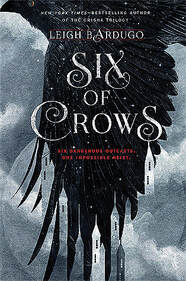
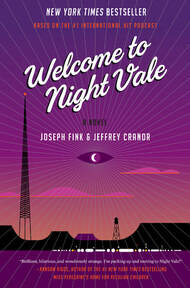
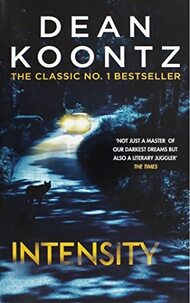
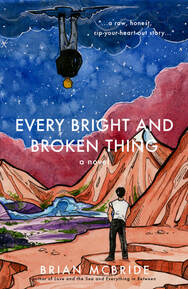
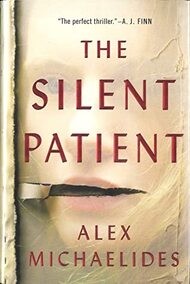
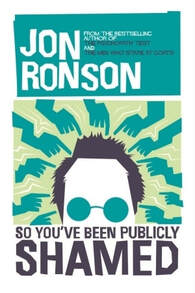
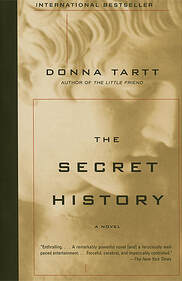



 RSS Feed
RSS Feed